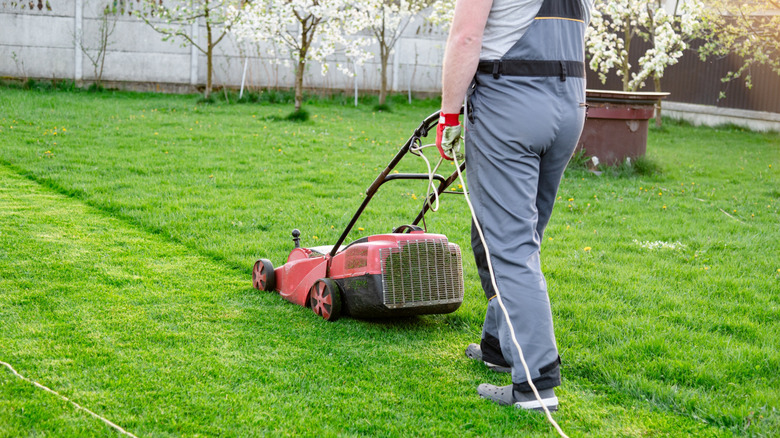How Much Air You Should Put In Your Lawn Mower Tires (& The Right Way To Do It)
We may receive a commission on purchases made from links.
It's almost inevitable to experience a moment during a mow when something just feels off. The engine sounds fine and the blades are doing their job, yet the mower doesn't glide the way it usually does. You look around the yard, wondering if it's the ground or the machine, and even consider whether the type of lawn mower you're using plays a role. But the issue is often your tire pressure. If it's low, high, or uneven, it can change the entire feel of your mower without giving you any warning.
So, how much air should your lawn mower tires have? Your front tires should sit at about 14 PSI, and your back tires work best around 10 PSI. Every tire has its maximum pressure printed on the sidewall, and it's fine to stay two to three PSI below that.
What also matters is balance. Both front tires need to match each other, and both rear tires need to be the same PSI, or the mower can tilt and create even more problems. That's when the cut turns uneven, the ride gets bumpy, and the mower deck may start to lift and bounce, which can also be a sign that it may be time to replace your lawn mower tires rather than just adjust the pressure. Look out for drastic temperature changes, as the fluctuation can shift your tires' PSI.
The right way to fill your lawn mower tires
Before you start adding air to your tires, it helps to set yourself up with a few quick steps. First, grab a jump starter air compressor, a multi-functional tool that can both jump start batteries and pump air into tires, to check your tire pressure first. It's accurate, easy to move around, and saves you the trouble of taking the mower anywhere. Just make sure the compressor is fully charged, because a weak battery won't generate enough pressure to fill the tires properly. Take a moment to check if the air hose fits your valve stem. Not all valve stems are the same, and if they don't match, you may need an adapter so the connection stays secure.
A quick look at the manufacturer's instructions will help you set the desired pressure and attach everything correctly. Once you're ready to fill the tires, stay within the recommended pressure range. It's also a smart habit to fill them while they're cold. A hot tire can give a false reading and throw off your results. Finally, remove the valve stem cap and attach the compressor hose. Once it's secured, fill the tire to the recommended PSI. Inflating slowly gives you more control and helps prevent overinflation. Once you've fixed your tire pressure, remember to check it frequently for any necessary adjustments; it is one of the lawn mower maintenance tasks that should be done after every mow, so your machine stays in top shape.

